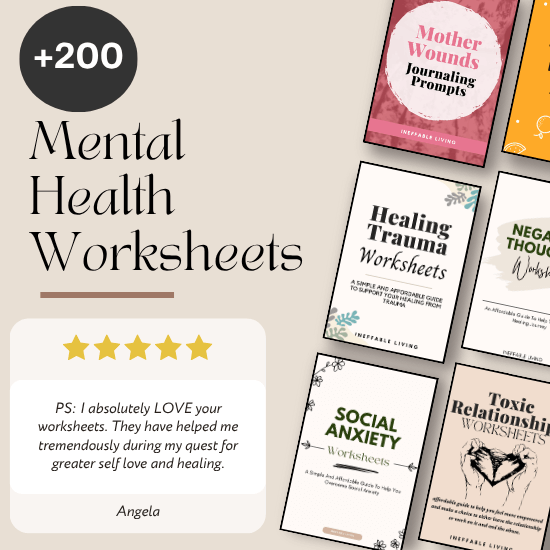When your thoughts are racing, your emotions feel tangled, and everything inside you feels loud, it’s easy to feel like you’re losing control. Mental health worksheets offer a lifeline in those moments—not by fixing everything instantly, but by helping you untangle the noise, one piece at a time. Here’s how these simple, printable tools can become a quiet refuge for your overwhelmed mind.
What Does “Inner Chaos” Feel Like?
Inner chaos can look different for everyone. For some, it’s nonstop overthinking or anxiety. For others, it’s emotional storms, burnout, or mental fatigue. But the shared experience is this: your mind feels messy, overloaded, and hard to navigate.
Mental health worksheets provide a structure to break through the storm—like a map for what feels like emotional quicksand.
Related: Struggling with Addiction? These Worksheets Will Support Every Step of Recovery
How Worksheets Help Calm the Mind
Here’s why mental health worksheets are so effective when your inner world feels chaotic:
1. They Break Big Emotions Into Manageable Parts
Chaos thrives in vagueness. Worksheets help you get specific—naming what you’re feeling, identifying triggers, and separating one emotion from another. That process reduces overwhelm.
2. They Give Your Brain Something to Do
When you feel lost in your mind, a worksheet gives you something concrete. It shifts you from spinning in circles to making small, focused steps—writing, sorting, choosing, identifying. This grounds your attention.
3. They Slow Down Mental Overload
Many worksheets include breathing cues, body scans, or mindfulness prompts. These exercises create space between thoughts and help calm the nervous system.
4. They Create a Safe Emotional Container
Writing inside a structured worksheet feels safer than unstructured journaling. You’re not just dumping feelings—you’re being gently guided to explore, reflect, and respond.
They Reorganize Mental Clutter
Think of a worksheet as a mental filing system. Instead of everything crowding your brain, you place pieces into categories: What am I feeling? What triggered it? What’s true? What do I need?
When to Use Them
You don’t need to wait until you’re in full distress. Worksheets can be used:
- In the morning to check in with yourself before the day begins
- After a triggering interaction or difficult emotion
- When you’re ruminating and can’t let go of a thought
- During moments of indecision or emotional shutdown
They help you interrupt the cycle before chaos becomes crisis.
A Note on Self-Compassion
It’s tempting to treat inner chaos like a problem to fix. Worksheets work best when used with gentleness. You’re not trying to suppress or control your feelings—you’re learning to sit with them, understand them, and support yourself through them.
Related: Always Anxious? These Worksheets Can Help You Calm Down Fast

Conclusion
Mental health worksheets are like anchors in emotional turbulence. They won’t make your pain disappear, but they can help you slow down, sort through the mess, and find a quiet, steady center inside yourself. With regular use, they build emotional clarity—and over time, inner chaos becomes less of a storm and more of a signal you know how to respond to.